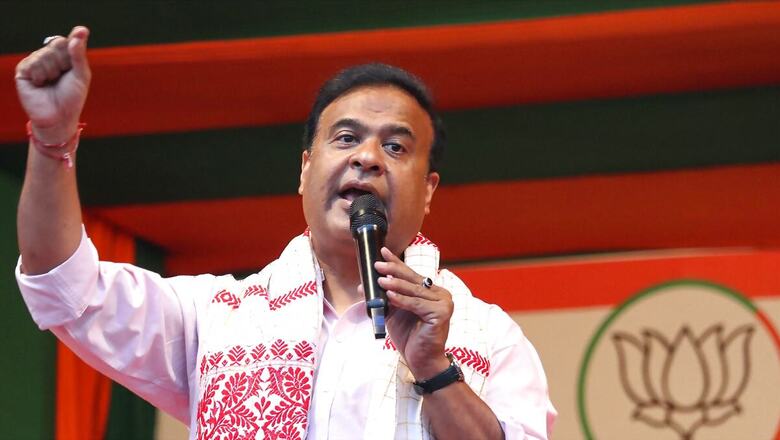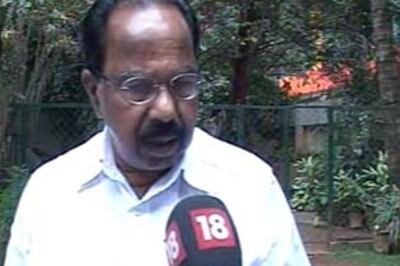
views
Narendra Modi took oath for a third consecutive term as the Prime Minister of India, along with 72 ministers, at the Rashtrapati Bhavan on June 9, 2024. With this feat, Narendra Modi became only the second prime minister in India’s history to serve three terms in a row, after Jawaharlal Nehru. Just before the oath was administered by the President of India, PM Modi posted on X (formerly Twitter), “Honoured to serve Bharat.”
Despite having set a “400 paar” goal, the BJP won 240 seats, 32 behind the majority mark. However, the NDA allies have enabled the BJP to set the government at the Centre. Noticeably, the BJP suffered a setback in Uttar Pradesh, Maharashtra, Rajasthan and Haryana despite being in power in these states.
The scenario is, however, quite different in Assam. The BJP, under PM Modi and Assam Chief Minister Himanta Biswa Sarma’s leadership and his fierce campaigns, has not only maintained its performance in the region but has gained two additional seats in every Lok Sabha poll since 2014. This impressive scorecard is largely due to the charismatic leadership and voter capitalisation by the incumbent CM of Assam.
The 2024 Lok Sabha elections were held in three phases in Assam on April 19, April 26, and May 7, for the constituencies of Dibrugarh, Jorhat, Kaziranga, Sonitpur, Lakhimpur, Nagaon, Diphu (ST), Darrang-Udalguri, Karimganj, Silchar (SC), Barpeta, Kokrajhar, Dhubri, and Guwahati. In these elections, 81.56 per cent of the total 2.45 crore eligible electorate exercised their franchise.
The NDA alliance in the state contested all 14 seats, with the BJP contesting 11 seats. The Congress, a member of the 16-party United Opposition Forum Assam (UOFA), contested 13 seats and left the Dibrugarh seat for the Assam Jatiya Parishad. Meanwhile, the AIUDF contested three seats and the AAP contested two. The incumbent BJP and its allies – the Asom Gana Parishad (AGP) and United Peoples’ Party Liberal (UPPL) – forming the NDA poll partners in the state, improved their tally to 11 seats in Assam in the Lok Sabha elections. BJP leader and Union Minister Sarbananda Sonowal won the Dibrugarh seat with a margin of 2.79 lakh votes. The saffron party also won Guwahati, Kaziranga, Sonitpur, Darrang-Udalguri, and Karimganj seats, among others.
In the 2019 Lok Sabha polls, the BJP had bagged nine seats, the Congress won three, AIUDF won one, and an independent candidate won one. In the 2014 elections, the BJP had won seven seats, the Congress and AIUDF three seats each, while an independent candidate bagged one seat. The BJP’s incremental victory is thus irrefutable. Despite the state’s 40 per cent minority population and the NDA with a Hindutva ideology at its core, it managed to increase its vote share to nearly 46 per cent, a significant jump from previous elections. The BJP lost only two of the eleven seats it contested—Nagaon and Jorhat—both to the Congress. In Jorhat, BJP MP Tapan Gogoi was defeated by Gaurav Gogoi, son of Tarun Gogoi. Gaurav Gogoi shifted to the constituency after his previous Lok Sabha constituency, Koliabor, ceased to exist due to delimitation.
The voter turnout in Assam this year reached an unprecedented high of 81.56 per cent. This figure surpassed the previous record, set in the state five years prior by the slimmest of margins, a mere 0.01 per cent. The BJP’s share rose from 36.41 per cent in 2019 to 37.43 per cent in 2024. Meanwhile, the Congress, winning three constituencies, saw its vote share increase from 35.79 per cent to 37.48 per cent during the same period.
While the overall vote share of the NDA experienced a marginal dip of 0.45 per cent, its constituent, Asom Gana Parishad (AGP) witnessed a decline in vote share from 8.31 per cent in 2019 to 6.46 per cent in 2024. The United People’s Party Liberal (UPPL), another NDA ally in Assam, won its first Lok Sabha seat in Kokrajhar, securing a 2.43 per cent vote share. However, the AIUDF suffered a significant setback as its president, Badruddin Ajmal, lost from Dhubri by a considerable margin, with the party’s vote share dropping to 3.13 per cent from 7.87 per cent.
While other parties like the Aam Aadmi Party (AAP) and the Trinamool Congress (TMC) received 0.85 per cent and 0.37 per cent vote shares respectively, the Left parties, CPI and CPI (M), secured a combined vote share of 0.58 per cent. Independent candidates accounted for 6.22 per cent of the vote share, while NOTA stood at 1.19 per cent.
Dhubri emerged with the highest voter turnout, reaching an impressive 92.1 per cent during the third phase on May 7. The Lok Sabha constituency of Barpeta closely followed Dhubri with a turnout of 85.2 per cent, albeit lower than its 2019 performance. Interestingly, Congress leader Rakibul Hussain defeated AIUDF supremo Badruddin Ajmal by a record margin of 10,12,476 votes in Assam’s Dhubri Lok Sabha.
With the Assembly elections only two years away, the BJP must reinforce a strong organisational presence in upper Assam, bolstered by a vigorous campaign, if the incumbent CM’s claims of 100 Assembly seats are to be materialised. However, the incumbent Himanta Biswa Sarma dispensation has a great report card to flash in relation to creating opportunities for the state and putting it at the centre stage of development and inclusivity.
Assam has excelled in the parameters of good governance, public service delivery, infrastructure and industrial growth. A robust economy with heightened CapEx investment leading to sprawling infrastructure development along with various social sector indices. Assam’s Gross State Domestic Product (GSDP) grew at a CAGR of 13.90 per cent from 2016-17 to 2022-23. The projected GSDP for 2024-25 is Rs 6,43,089 crore, a 13 per cent increase over 2023-24. According to the Periodic Labour Force Survey, Assam’s unemployment rate was 4.9 per cent in 2021-22 (current weekly status), lower than the national rate of 6.6 per cent.
CM Biswa Sarma stated in early 2024 that the state’s economy, which has registered a healthy 14.7 per cent growth for 2013-24, is projected to reach Rs 5.65 lakh crore. He also stated that the early estimates for the current year suggest a rise to Rs 6.38 lakh crore and has further claimed Assam’s economy to grow by Rs 10 lakh crore by 2026, which is quite realistic an estimate going by the present growth estimates and statistics. Regional disparity is becoming a thing of the past, with Assam’s record GDP growth poised to soon surpass Punjab’s GDP of around Rs 6,98,000 crore, as Assam’s GDP is set to touch Rs 5,67,000 crore.
However, the intensified campaign race by both the BJP and the Congress will be an unmistakable highlight of the 2026 Assembly elections, as witnessed in the prelude during the Lok Sabha elections’ campaigns by both parties. The electorate must conscientiously choose what is in the best interest of the state.
The author is a senior faculty in the Department of History, ARSD College, University of Delhi. Views expressed in the above piece are personal and solely those of the author. They do not necessarily reflect News18’s views.


















Comments
0 comment